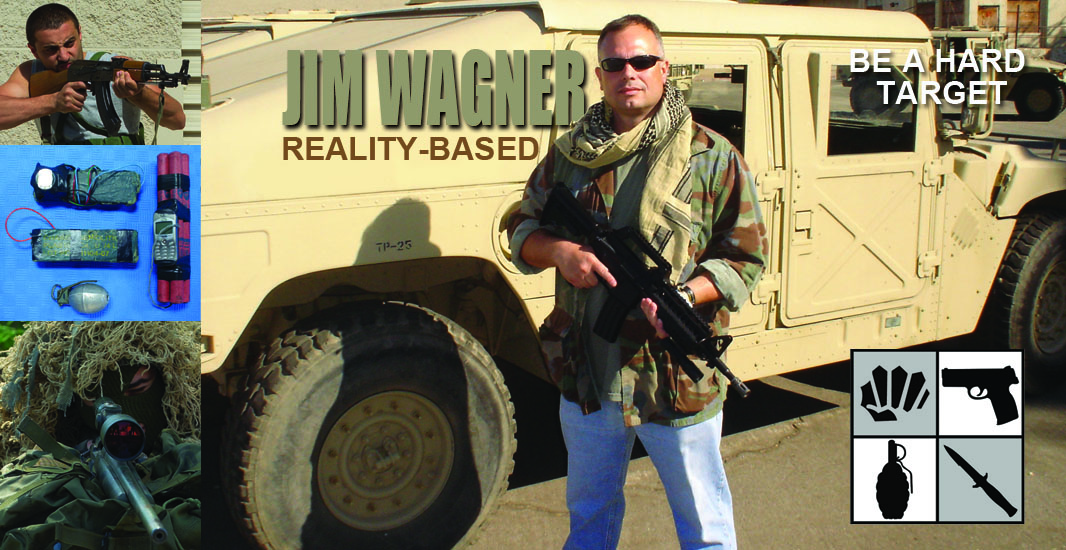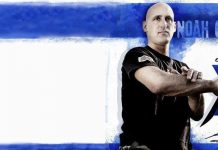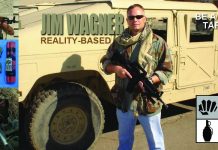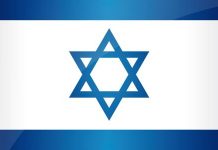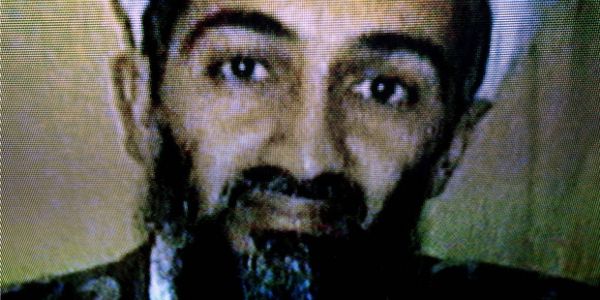
Osama Bin Laden’s al-Qaeda terrorist network claimed that they brought down the World Trade Center towers and punched a hole into the Pentagon on September 11, 2001 because the United States of America is a staunch supporter of the state of Israel. For the past several months, almost nightly, we have seen disturbing images of Israeli military forces battling it out with Palestinian gunmen, Sha’eed suicide bombers blowing themselves up in the middle of Jewish crowds, and a host of world leaders wringing their hands over the fate of the non-strategic city of Jerusalem.
Not only is Israel one of the most talked about current affairs topic, but as martial artists we can’t help but notice the swelling numbers of students enrolling in the Israeli martial arts of Krav Maga and Hisardut right here at home. Even actress/singer Jennifer Lopez features Krav Maga in her latest film Enough. Are these Middle East fighting systems just a passing fad, or will they revolutionize the way we train, like Brazilian ju-jitsu did for ground fighting? Secondly, are the systems being taught today in American schools and seminars really the “official self-defense of the Israeli military” as they claim to be, or are they just exotically named labels to sell a repackaged product?
In this article we’ll examine the origins of the Israeli martial arts, and we’ll take an in depth look into the systems being taught in Israel proper and in this country. Included with this article are a series of photographs taken in our Black Belt studio, demonstrated by two actual Israeli Special Forces soldiers, which show techniques that have never before been allowed to be disclosed outside of the Israeli military until this exclusive.
The History
Prior to 1948 the modern state of Israel did not exist. The last time the world heard anything about Israel was in 70 A.D. when Roman legions under General Titus brutally squashed a Jewish revolt, dispersed the majority of the Jewish population throughout the Roman Empire, and vengefully renamed the nation to Palestina (the Latin word for Israel’s ancient enemy Philistine), which is today the Gaza strip and Tel-Aviv area.
Although there has always been a remnant of Jews living in the Holy Land for the past 1,932 years, they have been under constant subjugation by foreign powers: the Byzantines, the Arabs, the Crusaders, again the Arabs, and the Ottomans (the Turks). The Ottoman Empire (1300 – 1918) ruled over both the indigenous Jews and Arabs in the region until their defeat in World War I (1914 – 1918) and the implementation of the British Mandate of 1919. In this same year the Jews formed an underground army known as the Haganah הגנה (the Hebrew word for defense) to deal with the ongoing conflict with Arab gangs, and in anticipation of the creation of a Jewish state promised to them by the British in the Balfour Declaration. Yet, despite the popularity of the Zionist movement and increased Jewish immigration, statehood was slow in the making. Instead the colonial powers allowed the local police to form an elite unit called the Notrim (guards) to defend isolated Jewish agricultural settlements against marauding Arabs, and to quell ongoing racial riots steadily growing in the urban centers.
Although the Notrim was successful at protecting the small outposts, they were not as effective in handling the deadly riots, or pursuing the enemy back behind his own lines. A Haganah officer named Yitzhak Sadeh (considered the father of the Israeli Special Forces), understood the police unit’s shortcomings and formed a new army unit called the Nodedot (wanderers).
When World War II (1939 – 1945) brought British forces once again into global conflict (against the Axis powers of Germany, Japan, and Italy) the need for oil was paramount. However, this rare commodity was threatened by German troops advancing eastward in North Africa and many Arab tribes openly siding with the Nazis. Reluctant at first, the British turned once again to Jewish fighters and formed the first official Israeli Special Forces unit on May 14, 1941 known as Pal’mach ״למחפּ (a Hebrew acronym for Plugot Machatz,ת מחץ וֹגוּלפּ which means strike platoon).
The original numbers of personnel sanctioned for Pal’mach training under British supervision was only suppose to be 1,000 fighters, but the Haganah overstepped their bounds and trained roughly 3,000 men in preparation for a future Jewish army to be used after the war.
The training that the Pal’mach commandos received was called Kapap פּ״פּק (Hebrew acronym for Krav Panim l’Panim, ים נפּל יםנפּ קרב face-to-face combat). The word “krav” קרב is also translated commonly as “fight.” Kapap was not one system, but a mixture of rigorous physical conditioning, firearms and explosives training, radio communications, wilderness survival training, combat first aid and foreign language courses (the enemy languages of German and Arabic). The empty hand combat training was a combination of Western fighting systems such as boxing (London Prize Ring Rules), Greco-Roman wrestling, and standard British military knife and baton training. At this time there was no one single vocabulary word or term used for the self-defense techniques in the program, Kapap was an all inclusive term.
The Pal’mach’s three combat brigades went onto assist the British in a variety of victorious campaigns: the invasion of Vichy (the French pro-Nazi government) Lebanon and Syria, espionage missions in Jordan, and fighting along side the British SAS (Special Air Service) in the Balkans.
When the war ended, so did the Jewish-British cooperation. The Jews expected the Brits to hold up their end of the bargain for a homeland. When it was apparent that the deal would not go through the Pal’mach used guerilla tactics against the British military and police installations. There were also terrorist attacks carried out by the Jewish ran Stern Gang and Irgun, but they were strongly condemned by the Haganah.
The newly formed United Nations (formed in 1945) knew that it was only a matter of time before an all out war between the Jews and Arabs would break out when the frustrated British vacated, so they tried to intervene by partitioning the region – a Jewish state on the west side of the Jordan River and an Arab state on the east side of the river (today’s Jordan). When the British lowered the Union Jack and left the region, the Jews declared their Independence on May 14, 1948. Hours later the forces of Jordan, Lebanon, Iraq, Egypt, Syria and the Palestinians attacked the newborn nation of Israel. The unofficial-turned-legitimate Haganah faced its greatest challenge and was officially renamed the Tzava Haganah Le’Yisrael לישראל הגנה צבא (transliteration army defense to Israel or known in English as the Israeli Defense Forces or IDF צהל). In the War of Independence the Israelis managed to not only survive, though greatly outnumbered and poorly equipped, but went on to form one of the most respected militaries in the world.
In 1949 the Pal’mach was disbanded due to political considerations, but in 1953 the IDF created a new elite unit known as Unit 101 commanded by Major Ariel Sharon, the current Prime Minister of Israel (Unit 101 was also the unit of co-author Avi Nardia’s father). The unit was tasked with infiltrating enemy lines and launching devastating raids. Since the unit was closely modeled after Pal’mach, the hand-to-hand combat training continued to be referred to as Kapap.
Having achieved great success in only six months of existence, the unit’s role expanded and they were merged into the 890th paratroopers and redesignated Unit 202.
In 1957, the ultra-secret unit named Sayeret Mat’kal (Unit 216) was formed by intelligence officer Avraham Aran who closely modeled it after the British SAS. In the 1970s this unit gained worldwide fame after a series of spectacular conterterrorist operations, the most famous of which was Operation Thunderball July 3-4, 1976 (known in the U.S. as the Raid on Entebbe) where operators flew into the hostile African nation of Uganda and rescued 103 hostages who had been hijacked by German and Palestinian terrorists.
Building upon the past successes of Unit 101, 202, Sayeret Mat’kal and other elite commando teams, the Israelis created many other specialized units to deal with the non ending state of war: the Navy’s Ha’Kommando Ha’Yami (SEALs), Mitsta’aravim (unit disguised as Arabs), Sayeret Tzanhanim (Airborne), Sayeret Golani (Mountain Warfare Unit), Sayeret Egoz (Special Forces), the para-military police counterterrorist unit YAMAM, and the list goes on.
In the IDF the Special Forces units had a monopoly on the martial arts training and Kapap came to be known as Lochama Zehira זעירה לוחמה (micro fighting or micro combat) in the 1970s. The system included a variety of military skills in addition to hand-to-hand combat. However, with Israel being at war with one Arab neighbor or another with unrelenting cross-border terrorist attacks, regular units also needed some sort of hand-to-hand fighting system. What they got was a basic no-nonsense system.
The Birth of Krav Maga
Before soldiers are eligible to go into the Special Forces in the IDF, they must first serve in a “parent unit.” Only after careful evaluation and passing a rigorous testing process can one enter into the SF world (an achievement very much respected in Israeli society, that or becoming a fighter pilot).
In order to prepare combat soldiers for their future roles, and to instill a warrior spirit, the IDF in the 1980s created a boot camp style hand-to-hand combat program called Krav Maga מגע קרב (Krav קרב meaning combat or fight, and Maga מגע meaning touch or contact). In context the term means Contact Fighting. On the other hand, the Israeli Special Forces continued to refer to their own brand of fighting techniques as Kapap or Lochama Zehira. They did not want any comparison to be made between Krav Maga, which was viewed upon as a “beginner level” art, and their own distinctive brand of fighting.
Japanese ju-jitsu (soft art) and judo (soft way) were the first oriental martial arts introduced into the IDF by Kapap instructors Moni Aizik and Imi Lichtenfeld. Then, in the 1970s the legendary Dennis Hanover helped lay the foundation of what is today’s Krav Maga along with other Special Forces instructors such as war hero Lt. Colonel Chaim Pe’er. In the 1980s Jewish Frenchman André Zeitun introduced Mui Thai to the military, which also influenced many of the kicks used in the system today.
Krav Maga is a well rounded hybrid system which encourages students to be aggressive and decisive in conflict. It includes hard hitting hand and elbow strikes, Thai style knee strikes, low follow through kicks, grappling, knife defense, gun and rifle takeaways, and lots of physical conditioning (cardiovascular and strength training). The original concept of Krav Maga was to absorb any martial art that was useful by taking the most efficient techniques that would work in a combat environment, yet with minimal instruction time. Even today recruits receive only a few hours of mandatory training.
Krav Maga and Offshoots Go Public
In the late 1980s Krav Maga was also being taught to the Israeli public. Since almost everyone in that society serves in the military, most of the population had been exposed to Krav Maga one way or the other. The term “krav maga” became so common that it was used as loosely in Israel as the American populace uses the word “karate” to refer to any Asian martial art. Like karate, variations of Krav Maga (different names and styles) sprung up everywhere. By the 1990s everybody was claiming to be a Krav Maga “master” or a “Tenth Dan” in the art. For example, if your name was Smith in Israel, and you wanted to open up your own Krav Maga school, you would just call your new and improved system Krav Maga Smith.
Some of the original instructors of Krav Maga, such as Dennis Hanover, got so fed up with people claiming that their Krav Maga was the “true version taught to elite units,” that they dropped the term Krav Maga from their vocabulary altogether. Hanover ended up calling his art Hisardut (survival), and taught Special Forces units under this new name.
Dennis Hanover also taught the civilian market under the same system name, along with his sons Guy and Yaron. One of their greatest claims to fame was being instructors at the prestigious Israeli Military Counterterrorist School (Lochama Be’Terror) located at the Adam Military Base.
With so many instructors laying claim to the Krav Maga system, many veteran instructors felt a need to regulate what was, and was not, pure Krav Maga. Several organizations became self-proclaimed overseers: Krav Maga Association, Krav Maga Federation, Krav Maga Union, Israeli Krav Maga, International Krav Maga Federation, Krav Magen (run by the famous instructor Eli Avikzar), and the list continues. One highly respected Israeli institution is the Wingate Institute (a sports organization). A few years ago they claimed to have the exclusive rights to Krav Maga (licensing and curriculum), but recently lost their case in the lower courts. The case is now before the Israeli Supreme Court. Many in the military community are outraged by the organization’s attempt to gain control, and are anxiously waiting for the outcome.
Since the commercialization of Krav Maga and Hisardut in Israel there has been an increasing movement away from using these terms altogether. Many elite military units still loyally refer to their hand-to-hand combat as Kapap, but a new acronym has also made its way to the counterterrorism community – Lotar (deriving its name from the counterterrorist school Lochama Be’Terror). All Kapap/Lotar לוט״ר/פּ״פּק instructors are Krav Maga instructors in the military, but not all Krav Maga instructors are Kapap/Lotar instructors, which is the highest level of training. In the past many instructors used to call themselves Krav Maga instructors, now they are simply calling themselves Madrich Le’Chima לחימה מדריך (combat instructor). Even the Israeli police community is switching terms. Defensive tactics are now called Haganah Atmit.
Even after the Israeli martial arts systems had been well established, other instructors, such as Patrick McCarthy and Carlos Newton, came afterward to make improvements – especially within the counterterrorist and diplomatic bodyguard units. Patrick McCarthy had lived in Japan for 20 years studying the Ryukyu Karate Jutsu system earning him 7th Dan. When McCarthy returned to Israel he worked closely with the IDF. Thus, Japanese arts continued to influence the Israeli arts. Today McCarthy is looked upon as “the foremost historian” of the Israeli martial arts through his organization the Karate Research Society.
The Special Forces system of Kapap/Lotar includes the basic fighting skills found in Krav Maga, but goes one step further with terrorist takedowns, assassination techniques, the in-depth study of pressure points, and a fairly new concept called “Boil Pressure Training” (physical and psychological pressure training to deal with combat stresses). One such training exercise practiced today by operators is to have a student circled by 10 to 20 fellow students who keep closing in on him slowly, all the while the student keeps fighting until he can no longer move; much like a standing dog pile. The squeezed student is expected to overcome the Closter phobic feelings and fight, or wiggle, his way out. Kapap/Lotar is not taught outside of the Special Forces, let alone outside of Israel. (Note: last year the Israeli Government granted limited permission to the authors to teach Kapap in the United States, restricted to law enforcement and military personnel only).
The Israeli arts in the U.S. today
Is what is being taught today in the United States genuine Israeli military-based martial arts or not? The answer is, that depends on who is teaching it.
Krav Maga™ headed up by Darrin Lavine, and Dennis Hisardut™ run by Alon Stivi. Both of these organizations are based out of Southern California. You’ll notice that both of these organizations have put a Trade Mark on their names. It’s something which Israeli practitioners have scoffed at and are challenging.
Alon Stivi of Dennis Hisardut™ is a man who teaches his craft based on hard earned experience. A former Israeli paratrooper and Master Sergeant, Stivi fought in the Israeli-Lebanon War (1982), and has had some hair-raising missions. He is also an expert on corporate security and terrorism awareness, and he is often featured in various Fortune 500 magazines and television interviews. Stivi is a superb athlete, and anyone who trains under him cannot help but getting into good shape, because he always throws in a healthy dose of Israeli military calisthenics and drills along with fighting techniques.
Dennis Hisardut™ of America, sanctioned by Dennis Hannover himself, is much smaller in scope than that of its Krav Maga™ competitors, but the quality of instruction is just as good. On the downside, some instructors under Stivi do not have the charisma that he does. You can obtain more information about Dennis Hisardut™ on their website www.hisardut.com
If you are interested in studying Kapap you must be an active member in law enforcement, corrections, probation or the United States military. The only organization authorized by the Israeli government to teach this system is HSS International. The most recent seminars were held in Los Angeles and Dallas. More seminars are scheduled for both the West Coast and East Coast. You can obtain more information about Kapap on two different websites: www.hssinternational.com or www.kapap.net
About the Authors
Jim Wagner is a world-renowned American law enforcement officer and Defensive Tactics instructor. He has been both a guest instructor of the Israeli government, and a student in a variety of Israeli Special Forces tactics course. He has also trained in Krav Maga, Hisardut and Kapap. Jim is a monthly columnist for this publication offering his views on high risk issues through a police and military perspective.
Avi Nardia is currently a Major in the IDF Reserves. He served five years active duty as a Army that included several combat tours in Lebanon, and operations along the Syrian, Jordanian and Egyptian borders. Avi is a Defensive Tactics instructor for Kapap, Lotar, Krav Maga and has trained numerous Israeli Special Forces units.

